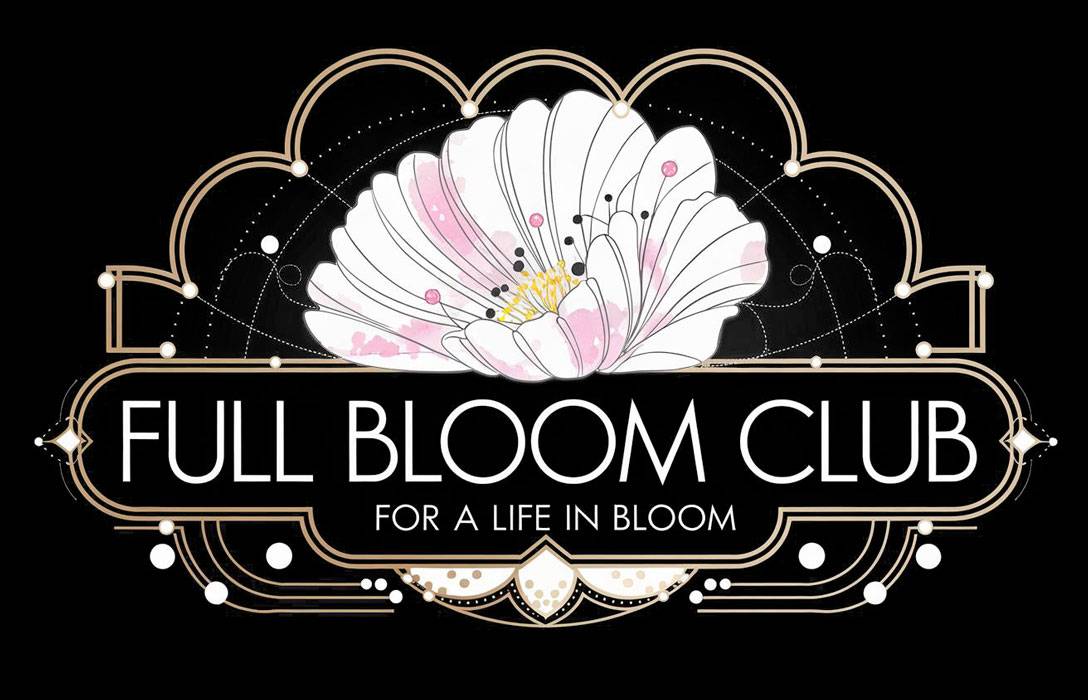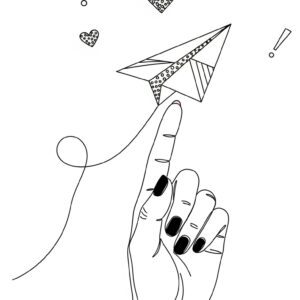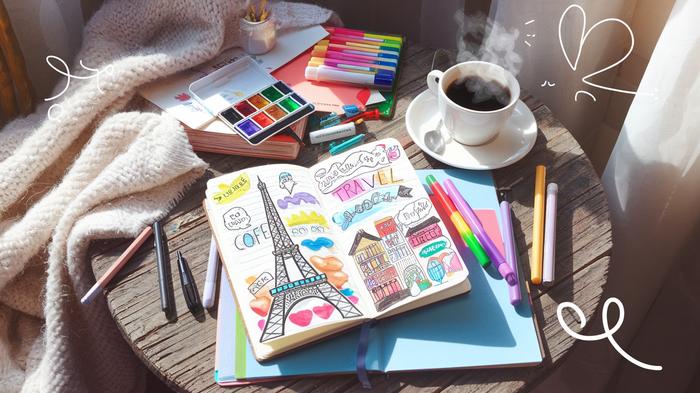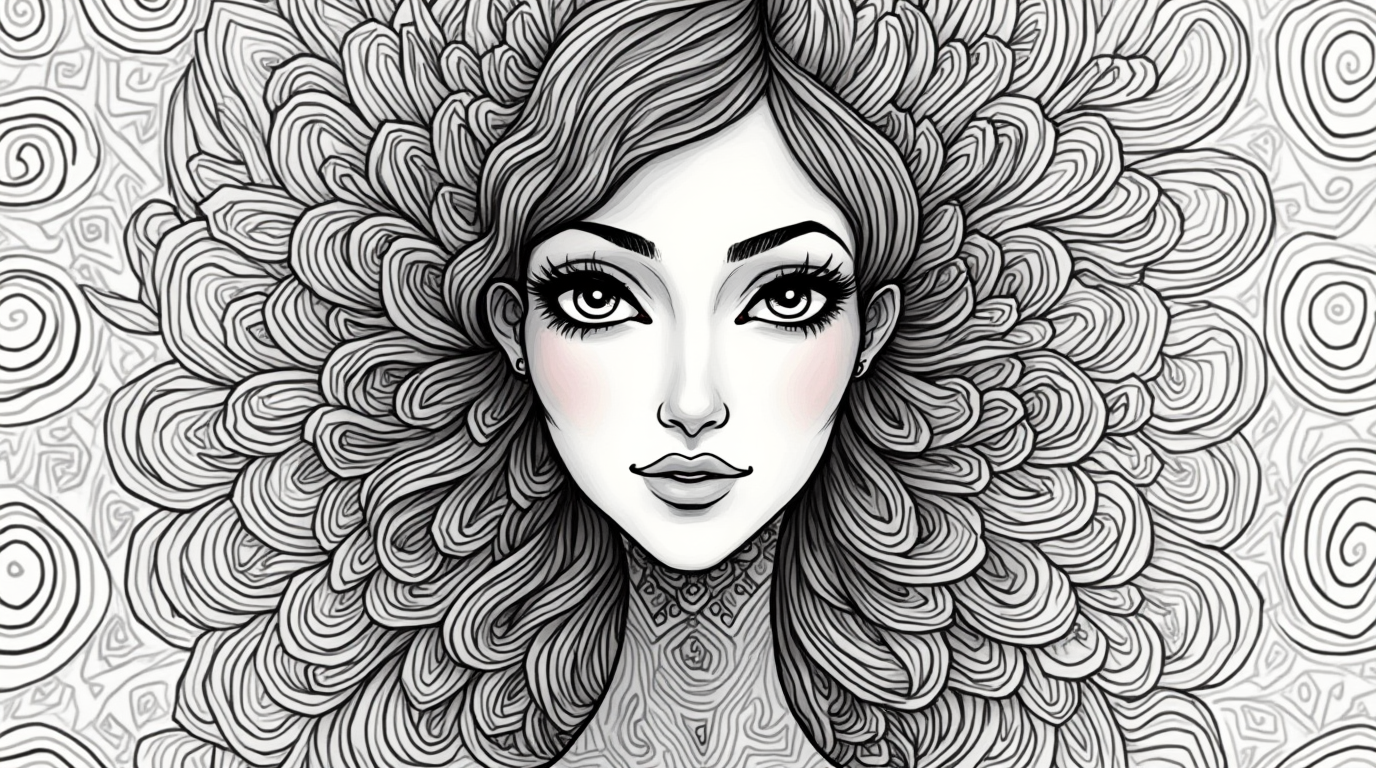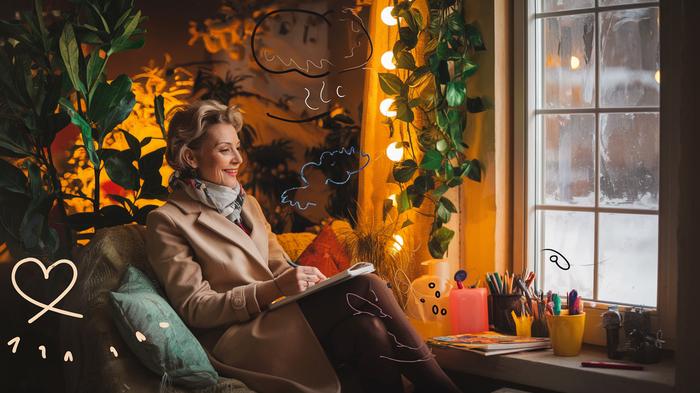Forget What You Know: Drawing for Women Who Think They ‘Can’t Do Art
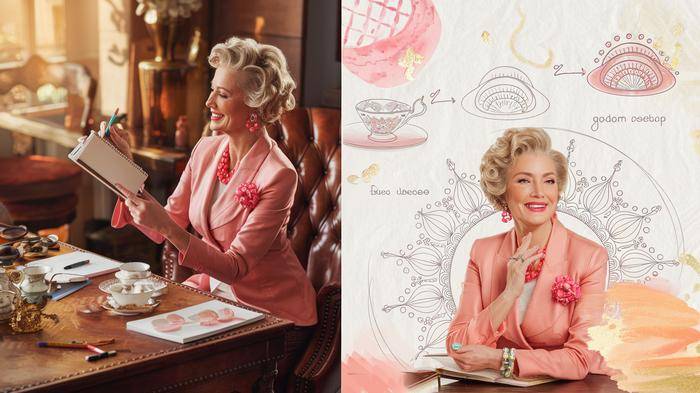
I never thought I’d be the type of person to get excited about pencils and paper. Yet here I am, at 42, with charcoal-stained fingertips and a sketchbook that’s become my constant companion. If you’d told me a year ago that I’d discover a passion for drawing, I would have laughed in your face. But life has a funny way of surprising us, doesn’t it?
Let me take you back to where it all began. Picture this: a rainy Sunday afternoon, a canceled book club meeting, and an unexpected detour into an art supply store. As I wandered the aisles, feeling like a fish out of water, a display of colorful pencils caught my eye. On a whim, I bought a small set and a sketchpad. Little did I know, those simple tools would become the keys to unlocking a whole new world of creativity and self-discovery.
Now, I know what you’re thinking. “But I can’t even draw a straight line!” Trust me, I’ve been there. In fact, I was the poster child for the “I can’t do art” club. But here’s the thing: drawing isn’t about perfection. It’s about expression, exploration, and most importantly, having fun. And let me tell you, art adventurer, the joy of creating something with your own hands is absolutely addictive.
The Science Behind Creativity and Aging
Before we dive into the nitty-gritty of drawing techniques, let’s talk about why picking up a pencil might be one of the best things you can do for yourself, especially as we age. Research has shown that engaging in creative activities like drawing can have profound effects on our cognitive health and overall well-being.
A study published in the journal “Neurology” found that people who participated in artistic activities were 73% less likely to develop mild cognitive impairment, a precursor to dementia. Isn’t that incredible? By simply doodling, we’re giving our brains a workout that could help keep us sharp for years to come.
But the benefits don’t stop there. Another study from Drexel University discovered that creating art, even for just 45 minutes, significantly lowered cortisol levels in participants. That means less stress and more zen, my friends. It’s like a mini-vacation for your mind, right there on paper.
Breaking Down the Barriers: Common Fears and How to Overcome Them
Now, I know you might be thinking, “That’s all well and good, but I’m still terrified of putting pencil to paper.” Let’s address those fears head-on, shall we?
Fear #1: “My drawings will look terrible.”
Here’s a little secret: everyone’s first attempts at drawing look a bit wonky. Even Leonardo da Vinci had to start somewhere! The key is to embrace the imperfections. They’re what make your art uniquely yours. Plus, there’s something oddly liberating about creating a truly awful drawing. It’s like letting your inner rebel run wild on paper.
Fear #2: “I don’t have any natural talent.”
Talent is overrated, my dear. Drawing is a skill, and like any skill, it can be learned and improved with practice. Think of it like learning to dance. You might feel awkward at first, but with time and patience, you’ll be gliding across the dance floor (or in this case, the paper) with confidence.
Fear #3: “I don’t have time for art.”
Who says you need hours to create? Some of my favorite drawings have been quick five-minute sketches done while waiting for my coffee to brew. Art can fit into the nooks and crannies of your day. It’s about making it a priority, not finding endless free time.
Getting Started: Simple Techniques for Beginners
Ready to take the plunge? Let’s start with some easy techniques that anyone can try, regardless of skill level.
1. Contour Drawing: This is a fancy way of saying “draw the outline.” Pick an object and try to draw its edges without looking at your paper. The results might be hilarious, but it’s a great way to train your eye and hand coordination.
2. Blind Contour Drawing: Same as above, but don’t look at your paper at all. It’s like a trust fall between your hand and your eyes. The results are often surprisingly expressive!
3. Zen Doodle Art: This meditative drawing technique involves creating beautiful images from structured patterns. It’s incredibly relaxing and perfect for those who think they can’t draw. Want to become a zen doodle pro in 30 days in a fun and easy way? Check out this bestselling resource! and here.
The Unexpected Joy of Imperfection
One of the most liberating moments in my drawing journey came when I realized that imperfection could be beautiful. I was attempting to sketch a vase of flowers, and no matter how hard I tried, I couldn’t get the proportions right. Frustrated, I started exaggerating the wonky lines, making them even more distorted. And you know what? It looked fantastic in its own quirky way.
This experience taught me a valuable lesson: art doesn’t have to be realistic to be meaningful or beautiful. In fact, some of the most celebrated artists in history were masters of imperfection. Think of Picasso’s abstract faces or Van Gogh’s swirling landscapes. They didn’t aim for photorealism; they aimed for emotion and expression.
Drawing and Mindfulness: A Match Made in Heaven
As I delved deeper into my drawing practice, I discovered an unexpected benefit: mindfulness. There’s something almost meditative about focusing intently on the lines and shapes before you. It’s like a form of active meditation, where the act of creating becomes a pathway to presence.
Try this: Set a timer for five minutes and draw an everyday object in front of you. Notice how your mind quiets, how your breath slows. It’s a mini-vacation from the chaos of daily life, right there on paper. Plus, you end up with a unique piece of art as a souvenir!
Surprising Historical Facts About Artists
Did you know that Mary Cassatt, one of the most renowned Impressionist painters, didn’t start seriously pursuing art until she was in her mid-20s? And Georgia O’Keeffe continued painting well into her 90s, even as her eyesight failed. These women prove that it’s never too late to start, and never too late to keep going.
Another fun fact: Leonardo da Vinci was known for his mirror writing. He wrote his personal notes backwards, from right to left. Some speculate it was to keep his ideas secret, while others think it might have been due to dyslexia. Either way, it shows that even the greats had their quirks!
The Transformative Power of Art
As I continued my drawing journey, I noticed something changing within me. I began to see the world differently. Suddenly, the play of light and shadow on my morning coffee cup became fascinating. The curve of a leaf, the texture of bark on a tree – everything became a potential subject for my sketchbook.
This heightened awareness spilled over into other areas of my life. I found myself more present, more appreciative of the small details that make up our days. It was as if drawing had given me a new pair of eyes, ones that saw beauty in the everyday.
And the benefits didn’t stop there. Remember how I mentioned that art can reduce stress? Well, I found that to be true in spades. On days when work felt overwhelming or family obligations piled up, I’d retreat to my sketchbook. Even just 15 minutes of doodling could reset my mood and give me a fresh perspective.
Finding Your Artistic Voice
As you embark on your own drawing adventure, remember that there’s no “right” way to create art. Your style is uniquely yours, shaped by your experiences, preferences, and the way you see the world. Embrace it!
One way to discover your artistic voice is to experiment with different subjects and mediums. Love nature? Try botanical sketches. Fascinated by people? Give portraiture a go. You might surprise yourself with what resonates. And if you’re looking for inspiration, why not check out this Ultimate Botanical Mastery Toolkit? It’s perfect for exploring the world of floral and plant-based art.
The Joy of Sharing Your Art
When I first started drawing, I was terrified of showing anyone my work. But as I gained confidence, I began sharing my sketches with friends and family. Their reactions were overwhelmingly positive and encouraging. It turns out, people love seeing original, heartfelt art – even if it’s not technically perfect.
FAQ: Common Questions About Starting to Draw
Q: What supplies do I need to get started?
A: You don’t need much! A simple sketchbook and a set of pencils are enough to begin. As you progress, you can experiment with different mediums like charcoal, colored pencils, or even digital tools.
Q: How often should I practice?
A: Consistency is key, but don’t pressure yourself. Even 10-15 minutes a day can make a big difference. The important thing is to make it a regular habit.
Q: What if I run out of ideas for what to draw?
A: The world is full of inspiration! Try drawing objects around your house, sketching from photographs, or even creating abstract patterns. You can also find endless prompts and ideas online or in drawing books.
Q: Can drawing really improve my mental health?
A: Absolutely! Drawing can reduce stress, improve focus, and boost self-esteem. It’s a form of self-expression that can be incredibly therapeutic.
Your Next Steps: Embracing the Artist Within
As we wrap up this artistic adventure, I want to leave you with a challenge. This week, commit to spending just 10 minutes a day with your sketchbook. Draw anything – your morning coffee, your pet, or even just abstract shapes. The subject doesn’t matter; what matters is that you’re creating.
Remember, every master was once a beginner. Your journey in art is just that – a journey. Enjoy the process, embrace the imperfections, and most importantly, have fun! Who knows? You might just discover a passion you never knew you had.
And if you’re looking for some structured guidance to kickstart your drawing practice, why not explore this 365 Drawing Delight Calendar? It’s a fantastic way to build a daily creative habit.
So, art adventurers, are you ready to pick up that pencil and start your own creative revolution? The blank page is waiting, and trust me, it’s not nearly as scary as it looks. In fact, it’s full of possibilities, just like you.
Now, go forth and create! Your artistic journey awaits, and I can’t wait to see where it takes you. Who knows? Maybe we’ll bump into each other at an art supply store someday, comparing notes on our favorite pencils and sharing sketches. Until then, keep drawing, keep exploring, and most importantly, keep believing in the artist within you. She’s been there all along, just waiting for the chance to shine.

